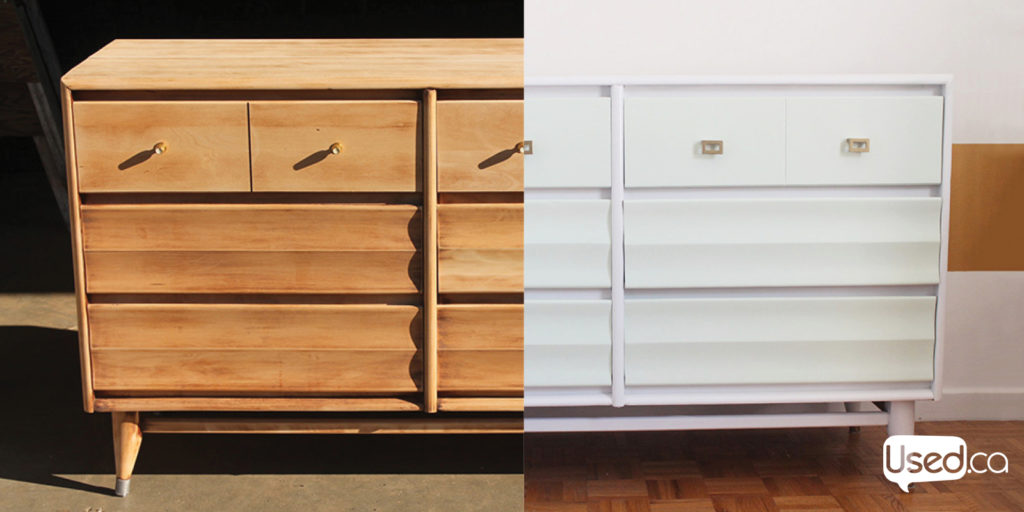
With so much furniture posted on Used.ca, it’s not as easy as finding a piece of the site, picking it up and plunking it in your living room. Often, furniture is sold for cheap or given for free because it is damaged or outdated. When you’re buying used furniture, it’s important to know if:
a) the furniture is high enough quality for your needs
b) the damage/flaws can be fixed, at the very least, hidden
Here are three great tips to help you know what to look for in a used furniture piece and how you can customize it to fit perfectly in your space.
1. When buying used furniture – look for quality!
Old furniture might not always look pretty, but most of the time it’s far more solid than what you’ll find today unless you’re willing to pay a premium.
When inspecting used furniture:
a) Look for solid wood/metal construction
b) Dovetail drawer joints are a good sign of quality
c) Check for any areas with screws. Make sure that they are tightly placed, and that the hole or the screw hasn’t been stripped down (you’ll be able to tell if you can easily remove the screw)
2. Start with the basic design – then make it yours
Here’s an example of a very successful before and after. Looking at the before, you might not think there’s anything ‘gem-like’ about this piece at all. The trick is to not see furniture for what it is, but what it could be. The first step was to replace the sliding door. Next, the legs and the rest of the drawer were painted white. This simple step had a brightening effect on the entire piece. Further alterations were made by cutting out two sliding doors to replace the old one and adding a new piece of hardware to polish it off.
After this dresser was spiffed up, you would never have you’d never have known this was the same one as the original! When personalizing your piece of used furniture be sure to:
a) Use furniture paint and a foam roller for the best coverage – always sand the furniture before applying
b) Wood stain markers are great if you like the stain colour already, but need to colour in some nicks and scratches
c) Use wood filler and a sander to smooth out any deep cracks
d) Paint the caps on your legs to brighten them up. My absolute favourite tool for this is a gold leaf pen
e) New hardware is your best friend. Don’t be afraid to spend a little money here. If your furniture was only $20 or even free, and materials to revamp it were $20, then why not spend $10-$20 on a unique pull or knob that’ll finish off the look of the whole piece? You come out on top in the end!
3. Hide the flaws
Your best bet is to conceal minor flaws if you have a solid, structurally intact piece of furniture. For instance, if you have leather chairs that have some cat scratches, add some decor, like sheepskin rugs or throw pillows, to hide the flaws and give them an aesthetic boost. The process of concealing used furniture flaws isn’t always a lengthy one. If you’re buying used furniture, be sure to inspect it for surface damage. If you come across scuffs or marks, think about how these could be concealed and fixed. When you sell used furniture, bring the buyers attention to obvious alterations you’ve made. By being transparent, you can also note how easy the fixes were and how significantly they have improved the piece.
When buying and selling used furniture, concealing flaws is a fantastic way to present your piece in the best light. Here are some tips to get you started:
Get creative – what decor items can you strategically place to cover up damage?
If the damage is in the wood, use wood filler, wood stain markers, or wood crayons to fill in the marks
Replace damaged items if the frame is solid
Concealing furniture flaws will go an enormously long way to bring new life to worn down pieces. Best of luck on your furniture hunting adventures, and have fun!
Useful links








